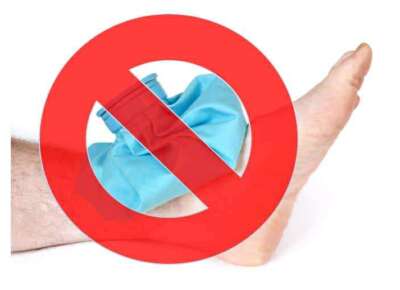
For decades, icing areas of pain and inflammation have been considered “the norm”. And while there is definitely a place and time for ice, it should not be used for extended periods of time. So let’s dig a little deeper and get to the bottom of this.
There’s an old Chinese adage that most acupuncturists swear by…”Ice is for dead people”. East Asian Medicine (EAM) has known for centuries that applying ice to injured tissues can be detrimental. And it finally seems that allopathic medicine is starting to get on board with this sentiment.
In EAM, there is an underlying idea that pain is generally due to an obstruction (of blood, lymphatic fluid, energy, etc.) and that by removing the obstruction and bringing free flow to the area, the pain will be resolved. Ice has a natural tendency to slow things down to a standstill, including blood and fluids. Therefore, icing an injury will contract and congeal the blood and tissue in the affected area producing a more permanent obstruction that is harder to disperse later.
Applying ice to injured tissue causes blood vessels near the injury to constrict and shut off the blood flow that brings in the healing cells. The blood vessels do not open again for many hours after the ice has been applied. This decreased blood flow can cause the tissue to die and can even cause permanent nerve damage.
Ice was and still is used to decrease pain and swelling from acute trauma. And in this capacity, it works incredibly well. But repeated use and long term exposure of ice to injured areas can actually delay healing. Studies on athletes demonstrate that the cooling nature of ice can interfere with strength, speed, endurance and coordination. All items that the body needs to repair the injured or strained area. In fact, anything that induces cooling can reduce function. So to improve function of an injured area, heat is the more appropriate choice.
Heat increases blood flow to the areas where it is applied. If part of the body is painful, injured, and inflamed, heat will encourage blood flow to the target area, which also sweeps away inflammation and brings more healthy cells and helpful enzymes to the tissues.
This also applies to digestion, metabolism and the reproductive tract. This is why EAM practitioners focus heavily on the thermodynamics of food and how it can affect the body. We want you to eat and drink warming things because the theory that the body needs heat to support healthy circulation doesn’t just apply to muscles and joints.
If you have ever paid attention to Asian cultures, you may have noticed that they almost always have hot tea with every meal. This is a tradition that has been passed down for centuries and it works. Asian grandmothers know that balancing the thermodynamics of the food they eat will help to keep their bodies functioning optimally, well into their 80’s and 90’s. This is something that needs to be emphasized more in Western cultures. Since we are obsessed with iced mochas, smoothies and ice cold sodas, we frequently introduce cold and dampness into our bodies, making it more difficult to heal, repair and function.
We have also become accustomed to eating whatever we want when we want it, like strawberries in the winter. Don’t get me wrong, strawberries are a healthy food. But eating them when they are not in season, can contribute to poor health. Ancient cultures ate with the seasons and from a health standpoint, this is what we are meant to do. Our bodies are designed to utilize the foods that are in season. Nature truly knows best in many situations.
The next time you get injured and your first instinct is to reach for the ice, consider the long term consequences. If there is swelling, using ice can be very beneficial, but you should always alternate with heat after icing the area. And once the swelling is gone, heat should be your go to for helping the area heal. If you have questions about this, please don’t hesitate to contact us.

